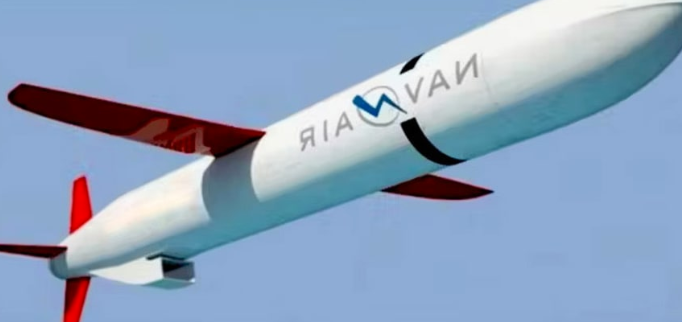The Game Let’s Poke the Bear is in full force all over NATO
In a move that’s shaking the geopolitical chessboard, the United States will deploy long-range missiles in Germany by 2026. This marks the first such deployment since the Cold War, unveiled during NATO’s 75th-anniversary summit. The decision has sent ripples through global corridors of power.
The US is rolling out Tomahawk cruise missiles, SM-6 interceptors, and the game-changing hypersonic missiles. These aren’t just any missiles; they’re packing a punch with ranges that far surpass existing arsenals. This isn’t merely a temporary measure—whispers suggest it could lead to a permanent foothold, underscoring a renewed US commitment to NATO’s integrated deterrence.
JUST IN: #US to station #Tomahawk cruise missiles in #Germany – Joint statement pic.twitter.com/h05kzBu9qH
— 𝕏 𝐁𝐫𝐞𝐚𝐤𝐢𝐧𝐠 𝐍𝐞𝐰𝐬 (@cheguwera) July 10, 2024
This deployment follows the disintegration of the Intermediate-Range Nuclear Forces (INF) Treaty, a Cold War-era agreement that kept these powerful weapons in check. The treaty fell apart five years ago, unleashing a new era of strategic possibilities and risks.
Russia’s Deputy Foreign Minister Sergei Ryabkov didn’t mince words, promising a “military response to the new threat.” He slammed NATO and the US for escalating tensions, painting the missile deployment as an aggressive act designed to intimidate Moscow.
The joint US-German declaration emphasized that this missile deployment is more than a mere show of force. German Defense Minister Boris Pistorius stressed that Europe must develop its own long-range missile capabilities. This temporary US presence is intended to buy NATO allies time to close the capability gap.
🇩🇪Germany, 🇮🇹Italy, 🇫🇷France and 🇵🇱Poland signed a memorandum of understanding to develop ground launched cruise missiles with a range of more than 500 km.
The 🇺🇸 US Tomahawks that will be used in the meantime have a range of up to 2500 km and start service in 2026#NATO #Defense pic.twitter.com/a3GLCm0ReF— Stefan (@StefanX011010) July 11, 2024
On Thursday, Pistorius, alongside defense ministers from France, Italy, and Poland, signed an agreement to spearhead the European Long-Range Strike Approach (Elsa). This initiative is a bold leap towards enhancing Europe’s missile defenses, seen as crucial for the continent’s security.
In Germany, the announcement has sparked political turbulence. The Greens, part of Chancellor Olaf Scholz’s coalition, voiced strong objections. Security spokesperson Sara Nanni criticized Scholz’s silence on the issue, warning that the lack of communication could amplify public fears and fuel disinformation.
The INF Treaty, which once banned ground-launched missiles with ranges between 500 and 5,500 kilometers, was a pillar of arms control. Its collapse came after mutual accusations of violations, with the US accusing Russia of developing a new nuclear-capable cruise missile. The treaty’s end in 2019 paved the way for today’s strategic recalibrations.
USA wants to station cruise missiles in Germany
NATO wants to strengthen its military deterrent in Europe. To this end, US cruise missiles of the “Tomahawk” type are to be stationed in Germany from 2026. There are also newly developed supersonic weapons.https://t.co/Prm1oiKnFf
— cvetko35 (@cvetko35) July 11, 2024
As the countdown to 2026 begins, Europe braces for a seismic shift in its defense landscape. This missile deployment is more than a military maneuver—it’s a clear signal of NATO’s evolving deterrence strategy and Europe’s urgent need to bolster its defenses.
In this high-stakes drama, the deployment of US missiles in Germany marks the dawn of a new era of strategic maneuvering and alliance dynamics. NATO’s focus on deterrence, coupled with Europe’s efforts to enhance its defensive capabilities, sets the stage for a period of intense geopolitical recalibration. The world watches closely as these new military realities unfold, promising both heightened tensions and potential strategic realignments on a global scale.
Major Points
- The US will start deploying long-range missiles, including Tomahawk cruise, SM-6, and hypersonic missiles, in Germany from 2026, marking the first such deployment since the Cold War.
- This decision follows the collapse of the Intermediate-Range Nuclear Forces (INF) Treaty five years ago, which had previously banned these types of missiles.
- Russia has threatened a military response, accusing NATO and the US of escalating tensions and attempting to intimidate Moscow.
- German Defense Minister Boris Pistorius stated that the temporary deployment is meant to encourage European nations to develop their own long-range missile capabilities, supported by the European Long-Range Strike Approach (Elsa) initiative.
- The deployment has faced criticism from Germany’s Greens, part of Chancellor Olaf Scholz’s coalition, who expressed concerns about communication and potential public fear.
Al Santana – Reprinted with permission of Whatfinger News



